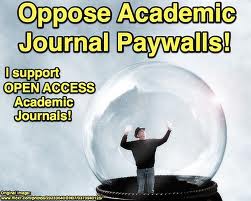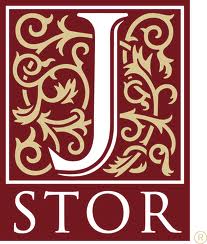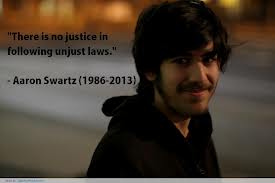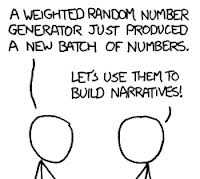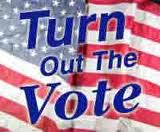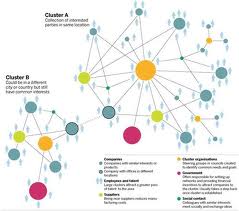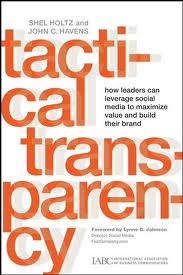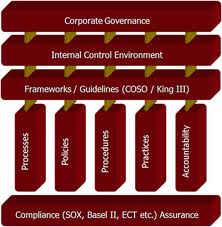Blog Archives
Aaron Swartz took down a piece of the Berlin Wall! We have to take it all down!
Posted by Hindol Datta
“The world’s entire scientific … heritage … is increasingly being digitized and locked up by a handful of private corporations… The Open Access Movement has fought valiantly to ensure that scientists do not sign their copyrights away but instead ensure their work is published on the Internet, under terms that allow anyone to access it.” – Aaron Swartz
Information, in the context of scholarly articles by research at universities and think-tanks, is not a zero sum game. In other words, one person cannot have more without having someone have less. When you start creating “Berlin” walls in the information arena within the halls of learning, then learning itself is compromised. In fact, contributing or granting the intellectual estate into the creative commons serves a higher purpose in society – an access to information and hence, a feedback mechanism that ultimately enhances the value to the end-product itself. How? Since now the product has been distributed across a broader and diverse audience, and it is open to further critical analyses.
The universities have built a racket. They have deployed a Chinese wall between learning in a cloistered environment and the world who are not immediate participants. The Guardian wrote an interesting article on this matter and a very apt quote puts it all together.
“Academics not only provide the raw material, but also do the graft of the editing. What’s more, they typically do so without extra pay or even recognition – thanks to blind peer review. The publishers then bill the universities, to the tune of 10% of their block grants, for the privilege of accessing the fruits of their researchers’ toil. The individual academic is denied any hope of reaching an audience beyond university walls, and can even be barred from looking over their own published paper if their university does not stump up for the particular subscription in question.
This extraordinary racket is, at root, about the bewitching power of high-brow brands. Journals that published great research in the past are assumed to publish it still, and – to an extent – this expectation fulfils itself. To climb the career ladder academics must get into big-name publications, where their work will get cited more and be deemed to have more value in the philistine research evaluations which determine the flow of public funds. Thus they keep submitting to these pricey but mightily glorified magazines, and the system rolls on.”
http://www.guardian.co.uk/commentisfree/2012/apr/11/academic-journals-access-wellcome-trust
JSTOR is a not-for-profit organization that has invested heavily in providing an online system for archiving, accessing, and searching digitized copies of over 1,000 academic journals. More recently, I noticed some effort on their part to allow public access to only 3 articles over a period of 21 days. This stinks! This policy reflects an intellectual snobbery beyond Himalayan proportions. The only folks that have access to these academic journals and studies are professors, and researchers that are affiliated with a university and university libraries. Aaron Swartz noted the injustice of hoarding such knowledge and tried to distribute a significant proportion of JSTOR’s archive through one or more file-sharing sites. And what happened thereafter was perhaps one of the biggest misapplication of justice. The same justice that disallows asymmetry of information in Wall Street is being deployed to preserve the asymmetry of information at the halls of learning.
MSNBC contributor Chris Hayes criticized the prosecutors, saying “at the time of his death Aaron was being prosecuted by the federal government and threatened with up to 35 years in prison and $1 million in fines for the crime of—and I’m not exaggerating here—downloading too many free articles from the online database of scholarly work JSTOR.”
The Associated Press reported that Swartz’s case “highlights society’s uncertain, evolving view of how to treat people who break into computer systems and share data not to enrich themselves, but to make it available to others.”
Chris Soghioian, a technologist and policy analyst with the ACLU, said, “Existing laws don’t recognize the distinction between two types of computer crimes: malicious crimes committed for profit, such as the large-scale theft of bank data or corporate secrets; and cases where hackers break into systems to prove their skillfulness or spread information that they think should be available to the public.”
Kelly Caine, a professor at Clemson University who studies people’s attitudes toward technology and privacy, said Swartz “was doing this not to hurt anybody, not for personal gain, but because he believed that information should be free and open, and he felt it would help a lot of people.”
And then there were some modest reservations, and Swartz actions were attributed to reckless judgment. I contend that this does injustice to someone of Swartz’s commitment and intellect … the recklessness was his inability to grasp the notion that an imbecile in the system would pursue 35 years of imprisonment and $1M fine … it was not that he was not aware of what he was doing but he believed, as does many, that scholarly academic research should be available as a free for all.
We have a Berlin wall that needs to be taken down. Swartz started that but he was unable to keep at it. It is important to not rest in this endeavor and that everyone ought to actively petition their local congressman to push bills that will allow open access to these academic articles.
John Maynard Keynes had warned of the folly of “shutting off the sun and the stars because they do not pay a dividend”, because what is at stake here is the reach of the light of learning. Aaron was at the vanguard leading that movement, and we should persevere to become those points of light that will enable JSTOR to disseminate the information that they guard so unreservedly.
Introduce Culture into Product Development
Posted by Hindol Datta
All products go through a life-cycle. However, the genius of an organization lies in how to manage the life-cycle of the product and extend it as necessary to serve the customers. Thus, it is not merely the wizardry in technology and manufacturing that determine the ultimate longevity of the product in the market and the mind share of the customer. The product has to respond to the diversity of demands determined by disposable income, demographics, geography, etc. In business school speak, we say that this is part of market segmentation coupled with the appropriate marketing message. However, there is not an explicit strategy formulated around identifying
- Corporate Culture
- Extended Culture
To achieve success, firms increasingly must develop products by leveraging ad coordinating broad creative capabilities and resources, which often are diffused across geographical and cultural boundaries. But what we have to explore is a lot more than that from the incipient stages that a product has imagined: How do we instill unique corporate DNA into the product that immediately marks the product with a corporate signature? In addition, how do we built out a product that is tenable across the farthest reaches of geography and cultural diversity?
Thus, an innovative approach is called for in product development … particularly, in a global context. The approach entails getting cross-disciplinary teams in liberal arts, science, business, etc. to work together to gather deeper insights into the cultural strains that drive decisions in various markets. To reiterate, there is no one particular function that is paramount: all of them have to work and improvise together while ensuring that there are channels that gather feedback. The cross disciplinary team and the institutionalization of a feedback mechanism that can be quickly acted upon are the key parameters to ensure that the right product is in the market and that it will be extended accordingly to the chatter of the crowds.
Having said that, this is hardly news! A lot of companies are well on their way to instill these factors into product design and development. Companies have created organizational architectures in the corporate structure in a manner that culturally appropriate products are developed and maintained in dispersed local markets. However, in most instances, we have also seen that the way they view this is to have local managers run the show, with the presumption that these “culturally appropriate” products will make good in those markets. But along the way, the piece that dissembles over time on account of creating the local flavor is that the product may not mirror the culture that the corporate group wants to instill. If these two are not aptly managed and balanced, islands of conflict will be created. Thus, my contention is that a top-down value mandate ought to set the appropriate parameters inside which the hotbed of collaborative activity would take place for product design and development in various markets.
Thus the necessary top down value systems that would bring culture into products would be:
- Open areas for employees to express their thoughts and ideas
- Diversity of people with different skill sets in product teams will contribute to product development
- Encouraging internal and external speakers to expound upon the product touch points in the community.
- Empowerment and recognition systems.
- Proper formulation of monetary incentives to inspire and maintain focus.
Posted in Corporate Social Responsibility, Employee Engagement, Employee retention, Extrinsic Rewards, Innovation, Intrinsic Rewards, Leadership, Learning Organization, Learning Process, Organization Architecture, Product Design, Recognition, Rewards
Tags: conversation, creativity, diversity, employee engagement, extrinsic motivation, innovation, intrinsic motivation, product design, product development, talent management, value
Darkness at Noon in Facebook!
Posted by Hindol Datta
Facebook began with a simple thesis: Connect Friends. That was the sine qua non of its existence. From a simple thesis to an effective UI design, Facebook has grown over the years to become the third largest community in the world. But as of the last few years they have had to resort to generating revenue to meet shareholder expectations. Today it is noon at Facebook but there is the long shadow of darkness that I posit have fallen upon perhaps one of the most influential companies in history.
The fact is that leaping from connecting friends to managing the conversations allows Facebook to create this petri dish to understand social interactions at large scale eased by their fine technology platform. To that end, they are moving into alternative distribution channels to create broader reach into global audience and to gather deeper insights into the interaction templates of the participants. The possibilities are immense: in that, this platform can be a collaborative beachhead into discoveries, exploration, learning, education, social and environmental awareness and ultimately contribute to elevated human conscience. But it has faltered, perhaps the shareholders and the analysts are much to blame, on account of the fangled existence of market demands and it has become one global billboard for advertisers to promote their brands. Darkness at noon is the most appropriate metaphor to reflect Facebook as it is now.
Let us take a small turn to briefly look at some of other very influential companies that have not been as much derailed as has Facebook. The companies are Twitter, Google and LinkedIn. Each of them are the leaders in their category, and all of them have moved toward monetization schemes from their specific user base. Each of them has weighed in significantly in their respective categories to create movements that have or will affect the course of the future. We all know how Twitter has contributed to super-fast news feeds globally that have spontaneously generated mass coalescence around issues that make a difference; Google has been an effective tool to allow an average person to access information; and LinkedIn has created professional and collaborative environment in the professional space. Thus, all three of these companies, despite supplementing fully their appetite for revenue through advertising, have not compromised their quintessence for being. Now all of these companies can definitely move their artillery to encompass the trajectory of FB but that would be a steep hill to climb. Furthermore, these companies have an aura associated within their categories: attempts to move out of their category have been feeble at best, and in some instances, not successful. Facebook has a phenomenal chance of putting together what they have to create a communion of knowledge and wisdom. And no company exists in the market better suited to do that at this point.
One could counter that Facebook sticks to its original vision and that what we have today is indeed what Facebook had planned for all along since the beginning. I don’t disagree. My point of contention in this matter is that though is that Facebook has created this informal and awesome platform for conversations and communities among friends, it has glossed over the immense positive fallout that could occur as a result of these interactions. And that is the development and enhancement of knowledge, collaboration, cultural play, encourage a diversity of thought, philanthropy, crowd sourcing scientific and artistic breakthroughs, etc. In other words, the objective has been met for the most part. Thank you Mark! Now Facebook needs to usher in a renaissance in the courtyard. Facebook needs to find a way out of the advertising morass that has shed darkness over all the product extensions and launches that have taken place over the last 2 years: Facebook can force a point of inflection to quadruple its impact on the course of history and knowledge. And the revenue will follow!
Posted in Corporate Social Responsibility, Employee Engagement, Innovation, Learning Organization, Learning Process, Narratives, Social Causes, Social Dynamics, Social Network, Social Systems
Tags: connection, conversation, crowdsource, democracy, diversity, experiments, social network, social systems
The Unbearable Lightness of Being
Posted by Hindol Datta
Where the mind is without fear and the head is held high
Where knowledge is free
Where the world has not been broken up into fragments
By narrow domestic walls
Where words come out from the depth of truth
Where tireless striving stretches its arms towards perfection
Where the clear stream of reason has not lost its way
Into the dreary desert sand of dead habit
Where the mind is led forward by thee
Into ever-widening thought and action
Into that heaven of freedom, my Father, let my country awake.
– Rabindranath Tagore
Among the many fundamental debates in philosophy, one of the fundamental debates has been around the concept of free will. The debates have stemmed around two arguments associated with free will.
1) Since future actions are governed by the circumstances of the present and the past, human beings future actions are predetermined on account of the learnings from the past. Hence, the actions that happen are not truly a consequent of free will.
2) The counter-argument is that future actions may not necessarily be determined and governed by the legacy of the present and the past, and hence leaves headroom for the individual to exercise free will.
Now one may wonder what determinism or lack of it has anything to do with the current state of things in an organizational context. How is this relevant? Why are the abstract notions of determinism and free will important enough to be considered in the context of organizational evolution? How does the meaning lend itself to structured institutions like business organizations, if you will, whose sole purpose is to create products and services to meet the market demand.
So we will throw a factual wrinkle in this line of thought. We will introduce now an element of chance. How does chance change the entire dialectic? Simply because chance is an unforeseen and random event that may not be pre-determined; in fact, a chance event may not have a causal trigger. And chance or luck could be meaningful enough to untether an organization and its folks to explore alternative paths. It is how the organization and the people are aligned to take advantage of that random nondeterministic future that could make a huge difference to the long term fate of the organization.
The principle of inductive logic states that what is true for n and n+1 would be true for n+2. The inductive logic creates predictability and hence organizations create pathways to exploit the logical extension of inductive logic. It is the most logical apparatus that exists to advance groups in a stable but robust manner to address the multitude of challenges that that they have to grapple with. After all, the market is governed by animal spirits! But let us think through this very carefully. All competition or collaboration that occurs among groups to address the market demands result in homogenous behavior with general homogeneous outcomes. Simply put, products and services become commoditized. Their variance is not unique and distinctive. However, they could be just be distinctive enough to eke out enough profits in the margins before being absorbed into a bigger whole. At that point, identity is effaced over time. Organizations gravitate to a singularity. Unique value propositions wane over time.
So let us circle back to chance. Chance is our hope to create divergence. Chance is the factoid that cancels out the inductive vector of industrial organization. Chance does not exist … it is not a “waiting for Godot” metaphor around the corner. If it always did, it would have been imputed by the determinists in their inductive world and we would end up with a dystopian homogenous future. Chance happens. And sometimes it has a very short half-life. And if the organization and people are aligned and their mindset is adapted toward embracing and exploiting that fleeting factoid of chance, the consequences could be huge. New models would emerge, new divergent paths would be traduced and society and markets would burst into a garden of colorful ideas in virtual oasis of new markets.
So now to tie this all to free will and to the unbearable lightness of being! It is the existence of chance that creates the opportunity to exercise free will on the part of an individual, but it is the organizations responsibility to allow the individual to unharness themselves from organization inertia. Thus, organizations have to perpetuate an environment wherein employees are afforded some headroom to break away. And I don’t mean break away as in people leaving the organization to do their own gigs; I mean breakaway in thought and action within the boundaries of the organization to be open to element of chance and exploit it. Great organizations do not just encourage the lightness of being … unharnessing the talent but rather – the great organizations are the ones that make the lightness of being unbearable. These individuals are left with nothing but an awareness and openness to chance to create incredible values … far more incredible and awe inspiring and momentous than a more serene state of general business as usual affairs.
Posted in Business Process, Chaos, Employee Engagement, Intrinsic Rewards, Leadership, Learning Organization, Learning Process, Model Thinking, Motivation, Order, Social Systems, Vision
Tags: boundaries, diversity, innovation, intrinsic motivation, learning organization, meaning, talent management, uncertainty
Importance of Heroes and Narratives in Organizations
Posted by Hindol Datta
“My own heroes are the dreamers, those men and women who tried to make the world a better place than when they found it, whether in small ways or great ones. Some succeeded, some failed, most had mixed results… but it is the effort that’s heroic, as I see it. Win or lose, I admire those who fight the good fight.” – George Martin
“Stories, like people and butterflies and songbirds’ eggs and human hearts and dreams, are also fragile things, made up of nothing stronger or more lasting than twenty-six letters and a handful of punctuation marks. Or they are words on the air, composed of sounds and ideas-abstract, invisible, gone once they’ve been spoken-and what could be more frail than that? But some stories, small, simple ones about setting out on adventures or people doing wonders, tales of miracles and monsters, have outlasted all the people who told them, and some of them have outlasted the lands in which they were created.” – Neil Gaiman
Heroes are not born. Circumstance and happenstance create heroes. In some cases, heroes are individuals who walk into a minefield of uncertainty that threatens their natural inclination for self-preservation in the interest of value systems and people that are alien to the individual. Thus, a private in an army is a hero already in the fact that he/she is walking into possible harm’s way and serving a cause to serve and protect people not necessarily related to him/her. One has heard the adage – one man’s freedom fighter is another person’s terrorist. Thus, someone whom we call a terrorist may be perceived a hero by someone else. Thus, in this case …it all becomes a matter of a point of view, but the fundamental point remains – a hero is considered a person who abnegates and abjures their rights to self-preservation for some greater perceived good.
Sustaining innovation is a vital yet difficult task. Innovation requires the coordinated efforts of many actors to facilitate (1) the recombination of ideas to generate novelty, (2) real-time problem solving, and (3) linkages between present innovation efforts with past experiences and future aspirations. Innovation narratives are cultural mechanisms that address these coordination requirements by enabling translation. Specifically, innovation narratives are powerful mechanisms for translating ideas across the organization so that they are comprehensible and appear legitimate to others. Narratives also enable people to translate emergent situations that are ambiguous or equivocal so as to promote real-time problem solving. With their accumulation, innovation narratives provide a generative memory for organizations that enable people to translate ideas accumulated from particular instances of past innovation to inform current and future efforts.
The concept of collective identity has gained prominence within organizational theory as researchers have studied how it consequentially shapes organizational behavior. However, much less attention has been paid to the question of how nascent collective identities become legitimated. Although it is conventionally argued that membership expansion leads to collective identity legitimacy, one draws on the notion of cultural entrepreneurship to argue that the relationship is more complex and is culturally mediated by the stories told by group members. Legitimacy is more likely to be achieved when members articulate a clear defining collective identity story that identifies the group’s orienting purpose and core practices. Although membership expansion can undermine legitimation by introducing discrepant actors and practices to a collective identity, this potential downside is mitigated by compelling narratives, which help to coordinate expansion. And that is where the heroes can be interwoven into organizational theory and behavior. It is important to create environments that by happenstance and circumstance create heroes. The architecture of great organizations imputes heroes and narratives in their tapestry.
Heroes and narratives are instrumental in organizations that forge a pathway to long-term sustenance and growth. Hence, we are quick to idolize figures – Iacocca, Welch, Jobs, Ellison, Gates, Benioff, Gerstner, Branson, Bezos, Zuckerberg, Brin and Page, etc. We learn narratives through case studies, news print, scholarly books on successful companies; and we emulate and steal and copy and parody and so much more … not necessarily because we want to be them but we want to create our identity in our own lair in ecosystems that move with or against the strongest currents.
So it is essential to celebrate the heroes and the narratives of great companies as an additional instrument to ignite engagement and foray into uncharted territories and conquer the unknown. Hence, personally I have also found solace in reading biographies of people who have made a difference, and a great pleasure in vicariously living through the ebbs and troughs of great companies
The Political Campaign Juggernaut – What Obamney campaigns can teach Organizations!
Posted by Hindol Datta
The Presidential election is tomorrow. I shall not disclose my position, but I am a San Francisco/Bay Area Native. Any doubts who I most likely am inclined toward? Most likely not! But the campaign throughout the year got me thinking. Imagine … over $1.3B have been spent to either bash someone or to send a message out. Over $1.3B! I do not have the actual numbers, but what I do know is that about $1B was spent in 2008 and it is estimated that the total spend was at least 30% more for the 2012 campaign. That makes it one of the biggest annual marketing budgets. To put it in context, that is almost 50% more than what Apple spent on advertising in 2011 ($933M).

We are expecting about 100M people to vote. 100M people to give a like for either party. Now look at it this way. $1.3B suggests that the total presidential campaign budget would translate to over 400M clicks (assuming $3 per click) or over 650 billion impressions (assuming $2 per 1000 impressions). Of course, that is not actually the case because there is payroll, organization expenses, etc, etc, etc. But you get the point. It is a big big budget … and it is one of the very few budgets that tend to be managed very well. Despite the largesse, it does not take into account the volunteer base that goes into the campaigns.

Now the outcome associated with political campaigns is fairly concrete. Either you have put the money to good use, hence resulting in the election of the appropriate person or your money spent has not been good enough. Who do you fire? The person who loses either goes moves shop from White House or considers becoming the CEO of the next big thing – perhaps a public equity capital group. Either way, we can take some learnings from all that have transpired and apply it to organizations. Of course, most organizations do not have this massive budget but regardless … they do have substantial marketing budgets and so the question is: What can we learn from what we have seen in the political theater that would enable the organization to shape and landscape the customer and employee mindshare.
Here are a few key points:
1. Pounding the message: Organizations have to be focused on the end goal and ensure at all times that any and all message that is being delivered is being done to attain a set of key objectives that enables organization success. That means that there should be no ambiguity as to what the organization and its brand represents. Dilution of the message may open up pockets of undecided customers or employees that could vote with their wallet and their feet quite readily.
2. Creating advocacy groups: Organizations have to create and nurture product and message evangelists by placing these nodes across many fields where potential customers and employees may come in contact with the organization. That would mean almost all social media channels, offline channels, conferences, elicit testimonials, investor and public relations efforts, timing special news releases etc. Advocacy groups are a proxy for all channels that an organization must leverage.
3. Aspirational Inclinations: Sell a dream! Sell possibilities! Sell the Why Nots! People tend to converge upon a platform of optimism. Yet, organizations must also be able to short their competitor’s offerings or perhaps not mention them at all.
4. Polling the behavior: If you notice, political campaigns have taken a page out of Lean Startup methodology. If polls go haywire …resources and messages are tweaked to create a semblance of stability and to get back to desired radar frequencies. Tweaking of the message and the presence of the messenger becomes important. This is field deployment of solutions associated with what all the data intelligence gathered is telling you.
5. Super PACS and Angel Affiliates: You have limits as do all organizations! No problem! Create evangelists that are not directly on the take. These are folks that will push your culture to the furthest corners of the globe. So recognize them and support them. They carry the torch since they fully believe in your mission and that your organization outcomes will impact them positively. How? Let them know? Drill. Baby. Drilllll the message.
6. Electoral College wins, not popular polls: Focus on the profitable customers; get the very best employees. Stratify your business so that you buy the win. You may not have the most likes but you would have had enough among the strata that truly matters.
7. Give the final reason: Give customers and employees a reason to vote. You want them to vote for you, but all the same you still want them to vote. You want the market of ideas to expand, even though they may serve competing visions in the tapestry of organizations in your space. But in trying to harness the turnout to the polls, you will have done as well as you can to draw them to your mojo.
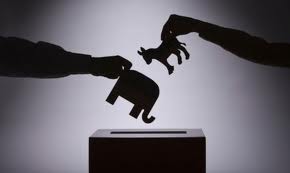
See you all possible voters in the polls tomorrow. Applaud and keep the flames of democracy alive.
Medici Effect – Encourage Innovation in the Organization
Posted by Hindol Datta
“Creativity is just connecting things. When you ask creative people how they did something, they feel a little guilty because they didn’t really do it, they just saw something. It seemed obvious to them after a while. That’s because they were able to connect experiences they’ve had and synthesize new things. And the reason they were able to do that was that they’ve had more experiences or they have thought more about their experiences than other people.”
– Steve Jobs
What is the Medici Effect?
Frans Johanssen has written a lovely book on the Medici Effect. The term “Medici” relates to the Medici family in Florence that made immense contributions in art, architecture and literature. They were pivotal in catalyzing the Renaissance, and some of the great artists and scientists that we revere today – Donatello, Michelangelo, Leonardo da Vinci, and Galileo were commissioned for their works by the family.

Renaissance was the resurgence of the old Athenian democracy. It merged distinctive areas of humanism, philosophy, sciences, arts and literature into a unified body of knowledge that would advance the cause of human civilization. What the Medici effect speaks to is the outcome that is the result of creating a system that would incorporate what on first glance, may seem distinctive and discrete disciplines, into holistic outcomes and a shared simmering of wisdom that permeated the emergence of new disciplines, thoughts and implementations.
Supporting the organization to harness the power of the Medici Effect
We are past the industrial era, the Progressive era and the Information era. There are no formative lines that truly distinguish one era from another, but our knowledge has progressed along gray lines that have pushed the limits of human knowledge. We are now wallowing in a crucible wherein distinct disciplines have crisscrossed and merged together. The key thesis in the Medici effect is that the intersections of these distinctive disciplines enable the birth of new breakthrough ideas and leapfrog innovation.
So how do we introduce the Medici Effect in organizations?
Some of the key ways to implement the model is really to provide the support infrastructure for
1. Connections: Our brains are naturally wired toward associations. We try to associate a concept with contextual elements around that concept to give the concept more meaning. We learn by connecting concepts and associating them, for the most part, with elements that we are conversant in. However, one can create associations within a narrow parameter, constrained within certain semantic models that we have created. Organizations can hence channelize connections by implementing narrow parameters. On the other hand, connections can be far more free-form. That means that the connector thinks beyond the immediate boundaries of their domain or within certain domains that are “pre-ordained”. In those cases, we create what is commonly known as divergent thinking. In that approach, we cull elements from seemingly different areas but we thread them around some core to generate new approaches, new metaphors, and new models. Ensuring that employees are able to safely reach out to other nodes of possibilities is the primary implementation step to generate the Medici effect.
2. Collaborations: Connecting different streams of thought in different disciplines is a primary and formative step. To advance this further, organization need to be able to provide additional systems wherein people can collaborate among themselves. In fact, the collaboration impact accentuates the final outcome sooner. So enabling connections and collaboration work in sync to create what I would call – the network impact on a marketplace of ideas.
3. Learning Organization: Organizations need to continuously add fuel to the ecosystem. In other words, they need to bring in speakers, encourage and invest in training programs, allow exploration possibilities by developing an internal budget for that purpose and provide some time and degree of freedom for people to mull over ideas. This enables collaboration to be enriched within the context of diverse learning.
4. Encourage Cultural Diversity: Finally, organizations have to invest in cultural diversity. People from different cultures have varied viewpoints and information and view issues from different perspectives and cultures. Given the fact that we are more globalized now, the innate understanding and immersion in cultural experience enhances the Medici effect. It also creates innovation and ground-breaking thoughts within a broader scope of compassion, humanism, social and shared responsibilities.

Implementing systems to encourage the Medici effect will enable organizations to break out from legacy behavior and trammel into unguarded territories. The charter toward unknown but exciting possibilities open the gateway for amazing and awesome ideas that engage the employees and enable them to beat a path to the intersection of new ideas.
Posted in Chaos, Employee Engagement, Innovation, Leadership, Learning Organization, Model Thinking, Motivation, Order, Organization Architecture, Social Dynamics, Social Network, Social Systems
Tags: boundaries, chaos, communication channel, creativity, crowdsource, discipline, diversity, employee engagement, experiments, intersection, learning organization, medici effect, social systems
Transparency in organizations
Posted by Hindol Datta
“We chose steel and extra wide panels of glass, which is almost like crystal. These are honest materials that create the right sense of strength and clarity between old and new, as well as a sense of transparency in the center of the institution that opens the campus up to the street.”
What is Transparency in the context of the organization?
It is the deliberate attempt by management to architect an organization that encourages open access to information, participation, and decision making, which ultimately creates a higher level of trust among the stakeholders.
The demand for transparency is becoming quite common. The users of goods and services are provoking the transparency question:
- Shareholder demand for increased financial accountability in the corporate world,
- Increased media diligence
- Increased regulatory diligence and requirements
- Increased demand by social interest and environmental groups
- Demands to see and check on compliance based on internal and external policies
- Increased employees’ interest in understanding how senior management decisions impact them, the organization and society
There are 2 big categories that organizations must consider and subsequently address while establishing systems in place to promote transparency.
- External Transparency
- Internal Transparency
External Transparency:
Some of the key elements are that organizations have to make the information accessible while also taking into account the risk of divulging too much information, make the information actionable, enable sharing and collaboration, managing risks, and establishing protocols and channels of communication that is open and democratic.
For example, it is important that employees ought to able to trace the integrity, quality, consistency and validity of the information back to the creator. In an open environment, it also unravels the landscape of risks that an organization maybe deliberately taking or may be carrying unknowingly. It bubbles up inappropriate decisions that can be dwelt on collectively by the management and the employees, and thus risks and inappropriateness are considerably mitigated. The other benefit obviously is that it enables too much overlap wherein people spread across the organizations may be doing the same thing in a similar manner. It affords better shared services platform and also encourages knowledge base and domain expertise that employees can tap into.
Internal Transparency:
Organization has to create the structure to encourage people to be transparent. Generally, people come to work with a mask on. What does that mean? Generally, the employees focus on the job at hand but they may be interested to add value in other ways besides their primary responsibility. In fact, they may want to approach their primary responsibility in an ingenious manner that would help the organization. But the mask or the veil that they don separates their personal interest and passions with the obligations that the job demands. Now how cool would it be if the organization sets up a remarkably safe system wherein the distinction between the employees’ personal interest and the primary obligations of the employee materially dissolve? What I bet you would discover would be higher levels of employee engagement. In addressing internal transparency, what the organization would have done is to have successfully mined and surfaced the personal interests of an employee and laid it out among all participants in a manner that would benefit the organization and the employee and their peers.
Thus, it is important to address both – internal and external transparency. However, implementing transparency ethos is not immune to challenges wherein increased transparency may distort intent, slow processes, increase organizational vulnerabilities, create psychological dissonance among employees or groups, create new factions and sometimes even result in poor decisions. Despite the challenges, the aggregate benefit of increased transparency over time would outweigh the costs. At the end, if the organization continues to formalize transparency, it would also simultaneously create and encourage trust and proper norms and mores that would lay the groundwork for an effective workforce.
Reputation is often an organization’s most valuable asset. It is built over time through a focused commitment and response to members’ wants, needs, and expectations. A commitment to transparency will increasingly become a litmus test used to define an association’s reputation and will be used as a value judgment for participation. By gaining a reputation for value through the disclosure of information, extensive communications with stakeholders, and a solid track record of truth and high disclosure of information, associations will win the respect and involvement of current and future members.
Kanter and Fine use a great analogy of transparency like an ocean sponge. These pore bearing organisms let up to twenty thousand times their volume in water pass through them every day. These sponges can withstand open, constant flow without inhibiting it because they are anchored to the ocean floor. Transparent organizations behave like these sponges: anchored to their mission and still allowing people in and out easily. Transparent organizations actually benefit from the constant flow of people and information.
Plans to implement transparency
Businesses are fighting for trust from their intended audiences. Shel Holtz and John Havens, authors of “Tactical Transparency,” state that the realities associated with doing business in today’s “business environment have emerged as the result of recent trends: Declining trust in business as usual and the increased public scrutiny under which companies find themselves thanks to the evolution of social media.” It is important, now more than ever, for organizations to use tools successfully to be sincerely but prudently transparent in ways that matter to their stakeholders.
“Tactical Transparency” adopted the following definition for transparency:
Transparency is the degree to which an organization shares the following with its stakeholder publics:
▪ Its leaders: The leaders of transparent companies are accessible and are straightforward when talking with members of key audiences.
▪ Its employees: Employees or transparent companies are accessible, can reinforce the public view of the company, and able to help people where appropriate.
▪ Its values: Ethical behavior, fair treatment, and other values are on full display in transparent companies.
▪ Its culture: How a company does things is more important today than what it does. The way things are done is not a secret in transparent companies.
▪ The results of its business practices, both good and bad: Successes, failures, problems, and victories all are communicated by transparent companies.
▪ Its business strategy: Of particular importance to the investment community but also of interest to several other audiences, a company’s strategy is a key basis for investment decisions. Misalignment of a company’s strategy and investors’ expectations usually result in disaster.
Here are some great links around transparency.
http://www.socialmediaexplorer.com/social-media-marketing/what-happens-when-transparency-goes-wrong/
According to J.D. Lasica, cofounder of Ourmedia.org and the Social Media Group, there are three levels of transparency that an organization should consider when trying to achieve tactical transparency.
▪ Operational Transparency: That involves creating or following an ethics code, conflict-of-interest policies, and any other guidelines your organization creates.
▪ Transactional Transparency: This type of strategy provides guidelines and boundaries for employees so they can participate in the conversation in and out of the office. Can they have a personal blog that discusses work-related issues?
▪ Lifestyle Transparency: This is personalized information coming from sites like Facebook and Twitter. These channels require constant transparency and authenticity.
Create an Action Plan around policies and circumstances to promote transparency:
Holtz and Havens outline specific situations where tactical transparency can transform a business, some of which are outlined in this list.
▪ Major Crises
▪ Major change initiatives
▪ Product changes
▪ New regulations that will impact business
▪ Financial matters
▪ Media interaction
▪ Employee interaction with the outside world
▪ Corporate Governance
▪ Whistleblower programs
▪ Monitoring corporate reputation internally and externally
▪ Whistleblower programs
▪ Accessibility of management
Posted in Corporate Social Responsibility, Employee Engagement, Employee retention, Leadership, Learning Organization, Learning Process, Management Models, Organization Architecture, Risk Management, Social Dynamics, Social Systems, Walled Garden
Tags: boundaries, communication channel, conversation, crowdsource, democracy, diversity, employee engagement, learning organization, mass psychology, organization architecture, risk management, social systems, strategy, transparency
Niche Networks – a natural evolution and the governing rules
Posted by Hindol Datta
Democracy is defined as a form of government in which the supreme power is vested in the people and exercised directly by them or by their elected agents under a free electoral system. This abstraction goes back to the old Greek states that spontaneously emerged and coalesced to form one of the greatest civilizations in world history. This was further refined by the great English political philosophers and more importantly, put to test in the pamphlets that led to the founding of the United States of America. The debates that reverberated in the pages of the Federalist Papers still continue to be amplified over the years into the political theater today … and more importantly; it plays a big role in the technology theater.
I have, over the years, found it a fascinating exercise to connect the dots. It is my firm belief that learning can be ported from many different and seemingly discrete and distant disciplines … to connect them is not a Nietzschian leap or a metamorphosis from a man to superman thinking. It is forging creativity, introducing dialogue between the wedges, creating an infrastructure and support system to promote association and free thought … and the abstractions would thus reduce to more concrete and practical rules for the advancement in daily living. Thus, despite being in finance, I have kept my sensibilities open to a plethora of fuzzy possibilities that may affect my realm, as much as explore the fuzzy stretches of finance that may affect the concrete realities in other areas … either in or outside of the corporate environment. I am enamored of the intellectual elasticity that has become a generational bar that the open society has enabled through technology.
So as we enter the domain of technology and mesh it with the advances in our understanding of an idyllic society with fine workings of democracy, we have to keep a few things in mind. These few things are important enough to understand in order to build out product and service solutions that are injected into mass gatherings and conversations, albeit in the virtual space. They are as follows:
1) Privacy: Man is a social animal. That being said, we crave for society but we seek solace in ourselves. Hence, science and religion coexist happily. There is never so much of each to drive the other out, since the final questions that one ultimately asks is meta-scientific. In seeking our silent spaces, the proxy in a social network is privacy. We impute value to this quaint notion which has different magnitudes across different cultures … however, my contention is that a true democratic system will allow its citizenry to preserve their spaces and enforce property rights upon such spaces. If a social network is a microcosm … an experiment playing out in the petri dish of events in our world, the network will have to embrace the democratic ideals and ensure privacy. The privacy can be protected through statutory means, business rules implemented in the system, technical do’s and don’ts, self-governing protocols, etiquettes for mutual understanding etc. These are the attributes that the right network will imbibe in the framing and final design of its own emergence.
2) Ease of Use: It is upon the network to enable the participants to speak and quickly adopt to common practices, learn new languages, adapt to changes, and to be wooed by the beauty of minimalism and simplicity. Urban planning is a lot different today than it was a 100 years ago. The good old times were not really the good old times … we live today in the best of times, and it will only get better. We are dealing with the consequences of advances in medical sciences, disaster recovery, and a general increase in income, et al… all of these translating into a burgeoning global population. Despite this and the adverse impact on the environment and having aptly defined the gloom and doom prophecy of Rome diatribe – we are not under the shadow of a Tower of Babel, lost in a litany of tongues. Rather, we are happily skewed toward embracing the common denominator, the ultimate leveler, the common theme, a grand platform. This de facto standardization of diverse orientations is making us more proficient in people finding greater meaning in their lives. The virtual network exist to allow such meaning, if the participants use it accordingly and most importantly … be able to step back and reflect upon the dialogues that they see or participate in. So the network must appeal in a manner to advance the common parlance … the global village is less a village … it is a megapolis of spontaneous evolution of innovation and knowledge. The pace of innovation in the next 10 years will outpace innovation over the last 100 years.
3) Mass Psychology – When I read Malcolm Gladwell’s Blink, I recall thinking that indeed … years of experience can effectively shortcut a process to arrive at conclusions that may be correct. Arriving to a meaningfully correct judgment happens despite one not working through heaps and layers of data, analysis, observations etc. Thereafter, I read Crowdsourcing by Howe and that opened up another world … there indeed is this wisdom of the crowds. I have, as you recall, referred to Hayek who had always been optimistic toward an aggregate marketplace of opinions … Crowdsourcing empirically confirmed that theses. So now one need not necessary get to Blink when there are infrastructures setup to crowd source reference points to get you meaningfully within a safe distance from a “blink” conclusion, the latter fermented over years of experience. A great network is the one that enables such crowdsourcing to occur… functionally and aesthetically. It takes years out of the equation; it advances knowledge at stupendous pace. Somewhere I read that innovation in the next 10 years will outpace innovation over the last 100 years … I imagine that the network of connections, social or otherwise, across a standard operational platform is enabling this effusion of ideas and innovation that is and will continue to permeate our daily living.
4) Communication Channels: Finally, the virtual network must create a flurry of communication channels. I am abstracting communication to a higher level … to a plane wherein the underlying meaning is to exchange messages that drive people to act toward something. Communication is not passive; even it would engender a dialogue as commonplace or existential as “Who am I”. The value-based virtual network ought to be responsible for parsing all the touch points that impact the sensibilities of a user. These sensibilities constitute the perennial target … but unfortunately it is a moving target since new contexts emerge rapidly and may change the underlying value from which the sensibilities are wrought.
So the networks that we know today – the big elephants in the room: FB, LinkedIn, Twitter have to reinvent themselves to go deeper into capturing the intrinsic value of the participant. Or it may serve the system of surfacing the extrinsic and articulated needs of the participants … thus leaving open the possibility of ushering a new generation of niche networks that can tap into the god and the devil within us. As long as it proscribes to the four rules outlined above, I am optimistic that these cocktails will advance us sooner to the better and more productive lives in the future.

